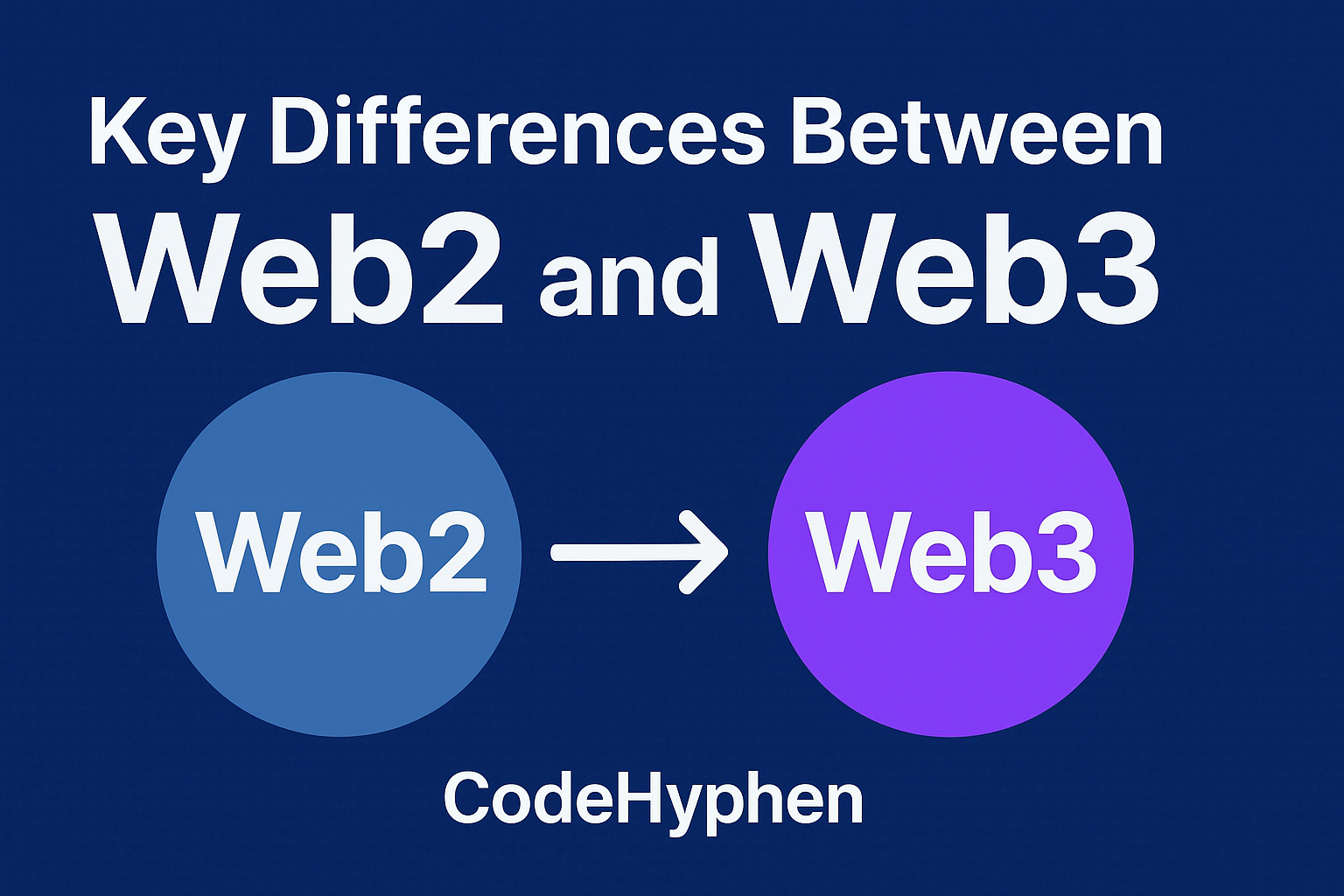Key Differences Between Web2 and Web3
The internet has evolved dramatically over the years. From simple static pages (Web1) to highly interactive and centralized platforms (Web2), and now toward a decentralized, user-owned ecosystem known as Web3
At CodeHyphen, we help businesses and developers understand these shifts so they can build future-ready digital products.
Understanding the difference between Web2 and Web3 is essential for staying ahead in the next wave of digital innovation.
What Is Web2?
Web2, also called the “read-write web,” represents the internet most people use today.
It introduced interactivity, social media, and user-generated content.
Platforms like Facebook, Google, and YouTube enabled billions of users to create and share content. But this came at the cost of centralization, where a few corporations control data, algorithms, and revenue models.
Core Features of Web2
- Centralized platforms dominate online activity
- Heavy dependence on user-generated content
- Advertising-driven business models based on data tracking
- Simple and user-friendly interfaces
- Limited user control over personal data
While Web2 opened the door for mass participation, it also concentrated power in the hands of big tech companies.
What Is Web3?
Web3, known as the “read-write-own web,” is the next phase of the internet powered by blockchain.
It aims to give users control over their data, digital identity, and assets.
Web3 applications (DApps) run on decentralized networks rather than centralized servers. Smart contracts govern interactions, and users manage digital ownership through crypto wallets.
Key Features of Web3
- Decentralized applications built on blockchain
- User ownership of data and digital assets
-
Token-driven business models (cryptocurrency & NFTs)
-
Transparent, verifiable transactions
-
Unified digital identity via blockchain wallets
-
Cross-platform interoperability
At CodeHyphen, we help companies build secure, scalable Web3 applications using these emerging technologies.
Web2 vs Web3: The Key Differences
Aspect
- Data Ownership
- Governance
- Identity
- Business Model
- Technology
- Transparency
- Interoperability
Web2
- Platforms control data
- Centralized corporations
- Multiple logins
- Advertising
- Centralized servers
- Limited
- Siloed systems
Web3
- Users own and control data
- Community-driven DAOs
- Unified blockchain identity
- Tokens, DeFi, peer-to-peer
- Blockchain & smart contracts
- Fully transparent
- Cross-platform wallets & tokens
Why Web3 Matters: The Benefits
1. User Empowerment
- Users regain control over their identity, data, and digital assets.
- With Web3 passwordless login, authentication becomes more secure and seamless.
2. Fair Digital Economies
- Creators can monetize directly without platform fees.
- NFTs enable artists to retain ownership and earn royalties.
3. Censorship Resistance
- No central authority can remove or restrict content.
- Decentralized storage ensures long-term accessibility.
4. Global Accessibility
- Anyone with a wallet and internet connection can participate.
5. Enhanced Security
- Blockchain reduces fraud and tampering risks.
(At CodeHyphen, we recommend smart contract audits before deployment.)
Challenges Web3 Still Faces
Despite its advantages, Web3 is still growing.
-
Scalability limitations
-
Complex user onboarding
-
Regulatory uncertainty
-
Smart contract vulnerabilities
Organizations exploring blockchain must understand these challenges for successful adoption.
The Future of Web3
Web3 continues to evolve with innovations such as:
-
Layer-2 scaling solutions
-
Cross-chain interoperability
-
AI-powered blockchain use cases
Choosing the right Layer-1 blockchain is now a fundamental step in any Web3 project — something we at CodeHyphen help clients evaluate.
As regulations improve and interfaces become simpler, Web3 will blend more seamlessly into everyday digital experiences.
Final Thoughts
The move from Web2 to Web3 is not just technical — it represents a philosophical shift toward digital freedom, transparency, and ownership.
-
Web2 gave us interactivity but centralized power.
-
Web3 returns control to the user.
For businesses wanting to explore blockchain, DeFi, NFTs, or enterprise-grade smart contracts, CodeHyphen provides end-to-end Web3 development and consulting services.
Understanding the key differences between Web2 and Web3 is essential — not only to keep up but to lead the next era of internet innovation.



